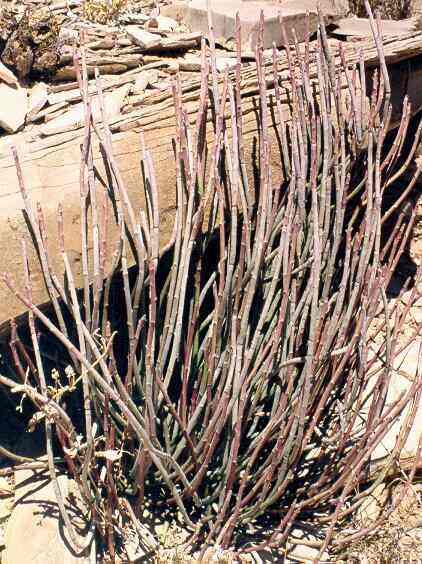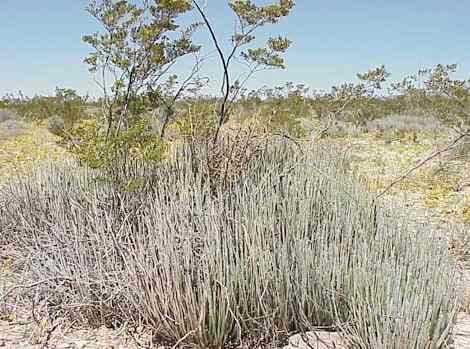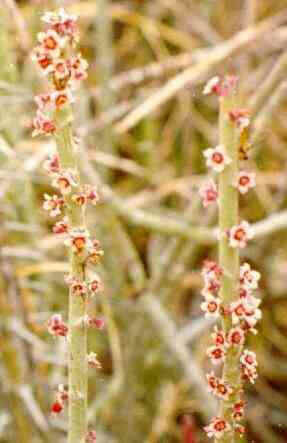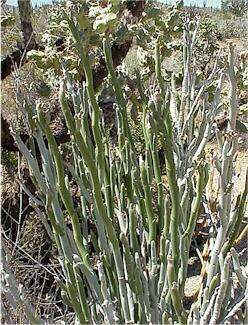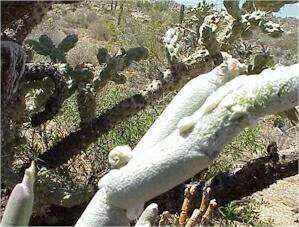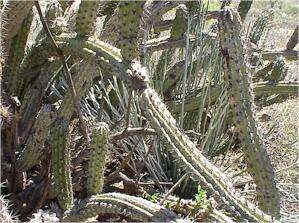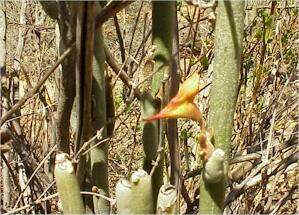CANDELILLA The common name, candelilla (meaning "little candle") is used for at least two plants in the spurge or euphorbia family (Euphorbiaceae). One of these plants, Euphorbia antisyphilitica, is a Chihuahuan Desert species. The other, Pedilanthus macrocarpus, is a Sonoran Desert species, common in parts of the Baja California peninsula of Mexico. Euphorbia antisyphilitica (candelilla)
This Chihuahuan Desert species was once common over much of northern Mexico and extended into southern Texas. Candelilla (meaning "little candle") is an apt name for this plant, which forms clusters of thin (about 1 cm), straight, wax-covered stems on gravelly flats and rocky ledges. It is leafless for most of the year but photosynthesizes through the stems. It produces many small, pink flowers on the upper parts of the stems. The plant has traditionally been harvested from the wild, to extract the thick wax coating, which can be used for making candles, wax polish, etc. Over-harvesting has seriously reduced the populations of this once-abundant species. The species name "antisyphilitica" refers to the folk belief in Mexico that the plant can be used for treatment of venereal disease.
Pedilanthus macrocarpus (slipper plant) This Sonoran Desert species of the Baja California peninsula is larger and more robust than the Chihuahuan Desert candelilla. It often grows to 1 metre height, with thick, bracnhed stems (about 2 cm diameter) that have a thick waxy coating, giving them a white sheen. If the stems are damaged they exude a milky fluid (as do many other plants in the euphorbia family). This plant most often is seen growing in the partial shade of cacti or shrubs. Its flowers are borne in clusters near the tops of the stems. Each cluster contains a single female flower surrounded by many male flowers that resemble a slipper - hence one of the common names for this plant is the slipper plant. The following images are clickable, for a larger version.
Go
to Chihuahuan Desert main page? |
